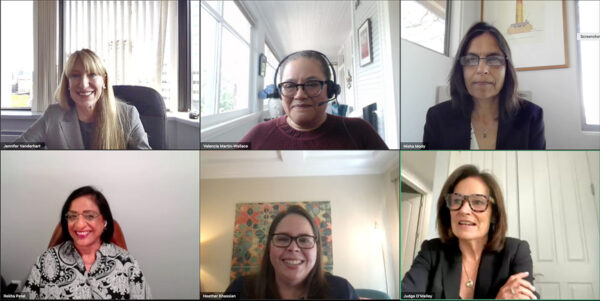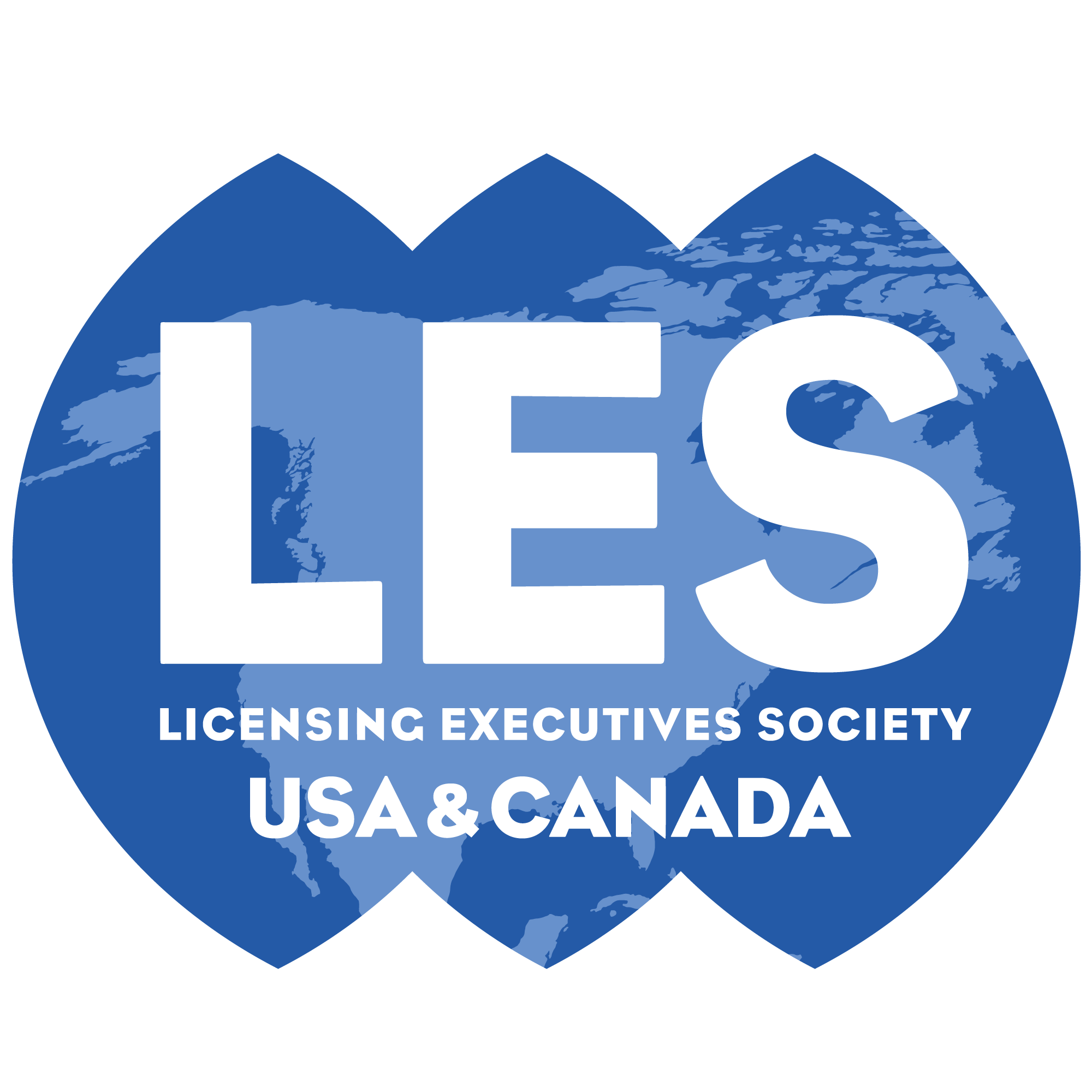In observance of World IP Day on April 26, LES hosted a panel of trailblazing women in IP who discussed why it’s so important to encourage more women to participate in IP and to benefit from their innovations. Current data show that, despite modest increases in recent years, women are underrepresented among inventors. At the current rate, it will take until 2061 to close the gender gap in patenting. According to a WIPO study, between 1999 and 2020, only 23 percent of all international patent applications were made by women, representing 13 percent of all inventors listed. The gender gap in IP means we’re all missing out. Everyone benefits when women are fully engaged in innovation.
Jennifer Vanderhart, Managing Director at Intensity, LLC moderated the all-star panel that consisted of :
- Valencia Martin-Wallace, USPTO Deputy Commissioner for Patents
- Kathleen O’Malley, Former Federal Circuit Judge, now with Irell & Manella
- Heather Khassian, Law Vice President, Intellectual Property at NCR Corporation
- Nisha Mody, Managing Director at Intensity, LLC
- Rekha Patel, President and Founder, Xrathus
When asked about first exposure to innovation and how it led to their current position some panel members mentioned their parents as inspiration, while others said they came to IP through scientific and quantitative fields such as geology, chemistry and econometrics.
The response to a question about changes that have enhanced participation of women in the IP ecosystem was unanimous: panelists agreed that participation of women has progressed dramatically in 30 years. Speaking about diversity, Valencia mentioned a March 2023 conference hosted by the USPTO, “Women in IP: Meeting on Mentoring and Related Topics.” More than 30 countries were represented at the three-day gathering held in Alexandria, Virginia. Discussions and workshops focused solely on bringing more women into the IP community.
On the topic of how to guide younger girls into the IP field, Jennifer pointed out, “It really comes down to educating across the spectrum and encouraging women from elementary school on to speak up for themselves.” She added, “It’s also important for teachers to call on girls more often.” Rehka, who coaches young girls on innovation, has been working with six- to 13-year-olds. She sees them as confident and finds them inspiring as well.
Heather observed, “Because of COVID some young folks have gotten lost in the shuffle. My challenge to everyone is to get back out into the world. I think mentorship and being with other people is really important.”
Diversity strengthens all human endeavors, especially technical innovation, where a variety of talents, approaches, and points of view is essential to success. This year’s World Intellectual Property Day campaign highlighting Women in IP is an opportunity to celebrate the amazing achievements of women inventors, creators, and entrepreneurs around the world.
Visit LES webinars to view the recording of Women in IP. Then register, and the video should appear. https://register.gotowebinar.com/register/8807306271877381463

Top row, left: Jennifer Vanderhart, Valencia Martin-Wallace, Nisha Mody
Bottom row: Rekha Patel, Heather Khassian, Judge Kathleen O’Malley

Get Social